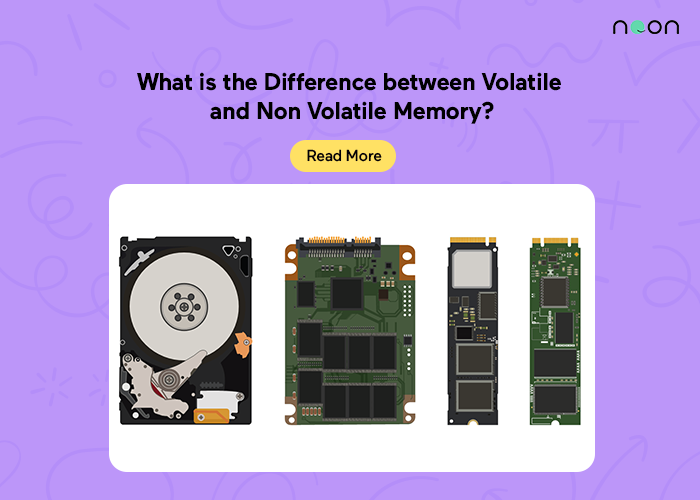Are you confused between volatile and non-volatile memory when it comes to storing your data? Don’t worry! In this blog, we’ll discuss the major differences between the two types of memories and help you understand their significance so you can make informed decisions about where to store your data. Read on for more info!
What is Volatile Memory?
Volatile memory is a type of computer memory that requires power to maintain the stored data. When the power is removed, the data is erased. Volatile memory examples are dynamic random access memory (DRAM) and cache memory. RAM is volatile memory.
What is Non-Volatile Memory?
Non-volatile memory is computer storage that maintains its data even when the power is off. Non-volatile memory is used for long-term data storage, such as ROM, EPROM, and EEPROM.
Difference between Volatile and Non Volatile Memory
Volatile memory is temporary storage that only retains data for a short period of time, typically until the power is turned off. Non-volatile memory is permanent storage that retains data even when the power is turned off.
Volatile memory is used to store data that needs to be accessed quickly, but doesn’t need to be stored long-term. Non-volatile memory is used to store data that needs to be accessed slowly, but needs to be stored permanently.
Types of Volatile Memory
There are two types of volatile memory: static random access memory (SRAM) and dynamic random access memory (DRAM). SRAM is faster and more expensive than DRAM. It is used for CPU caches and registers. DRAM is slower and cheaper than SRAM. It is used for main memory.
Types of Non-Volatile Memory
There are a few different types of non-volatile memory, the most common being flash memory. Flash memory is used in USB drives, digital cameras, and solid state drives. Another type of non-volatile memory is EEPROM, which stands for electrically erasable programmable read-only memory. This type of memory is often used in computers and other electronic devices to store small amounts of data that need to be saved when the power is turned off.
Conclusion
Volatile and non-volatile memory are both types of computer memory that store data temporarily or permanently. The main difference between the two is that volatile memory requires power to maintain its data, while non-volatile memory does not. This means that if power is lost, all data stored in volatile memory will be lost, while non volatile memory will retain its data. Volatile memory is faster and more expensive than non volatile memory, which makes it better suited for temporary storage, such as CPU cache or RAM. Non volatile memory is slower and costs more but are often used for long-term storage, such as ROM or flash memory.
If you’re looking for a way to learn about other subjects, the Noon app is a great option. With over 10,000 lectures available offline, you can learn at your own pace. And with teachers from all over the world available, you can find someone who can help you learn about any subject you’re interested in. So why not give it a try? Download the Noon app now and start learning!
